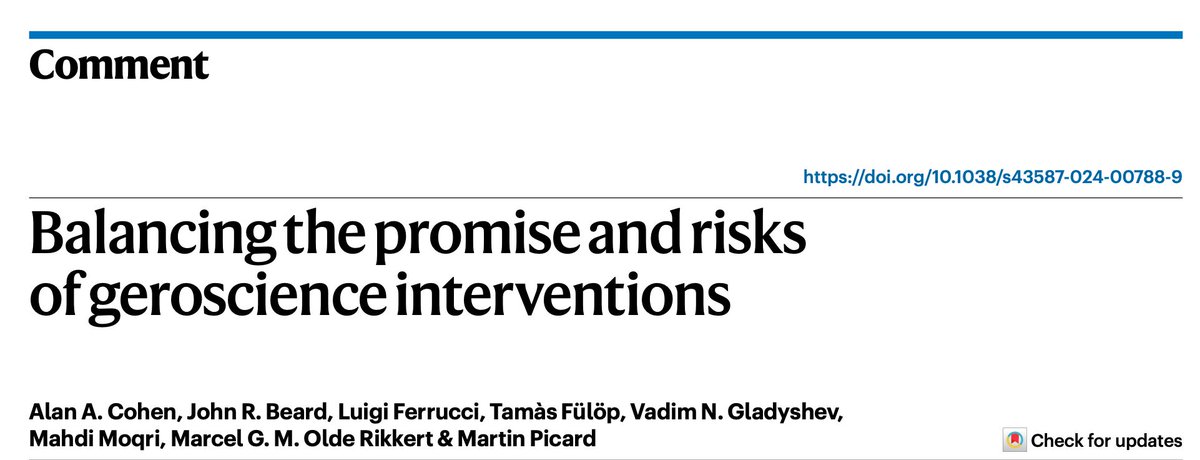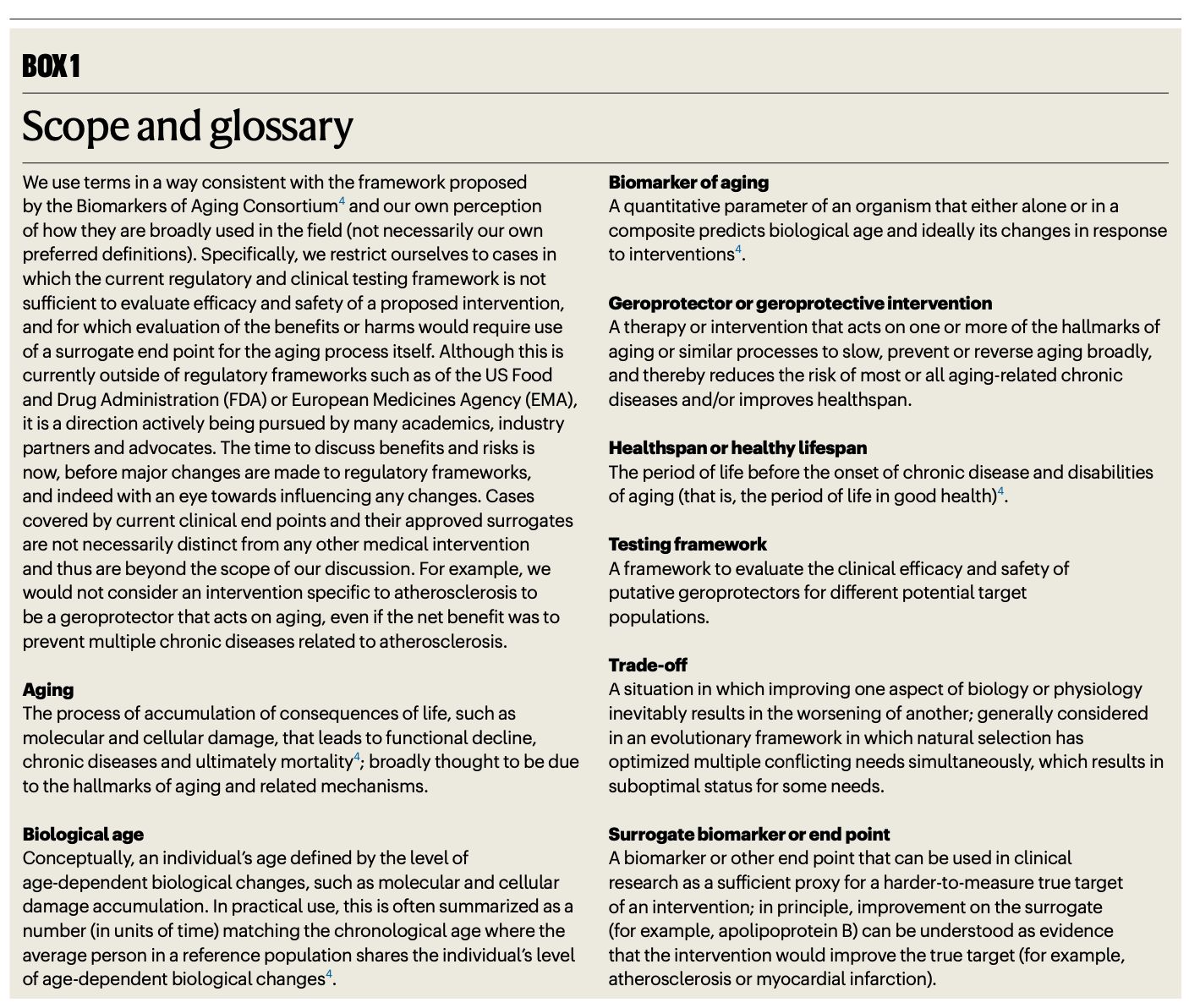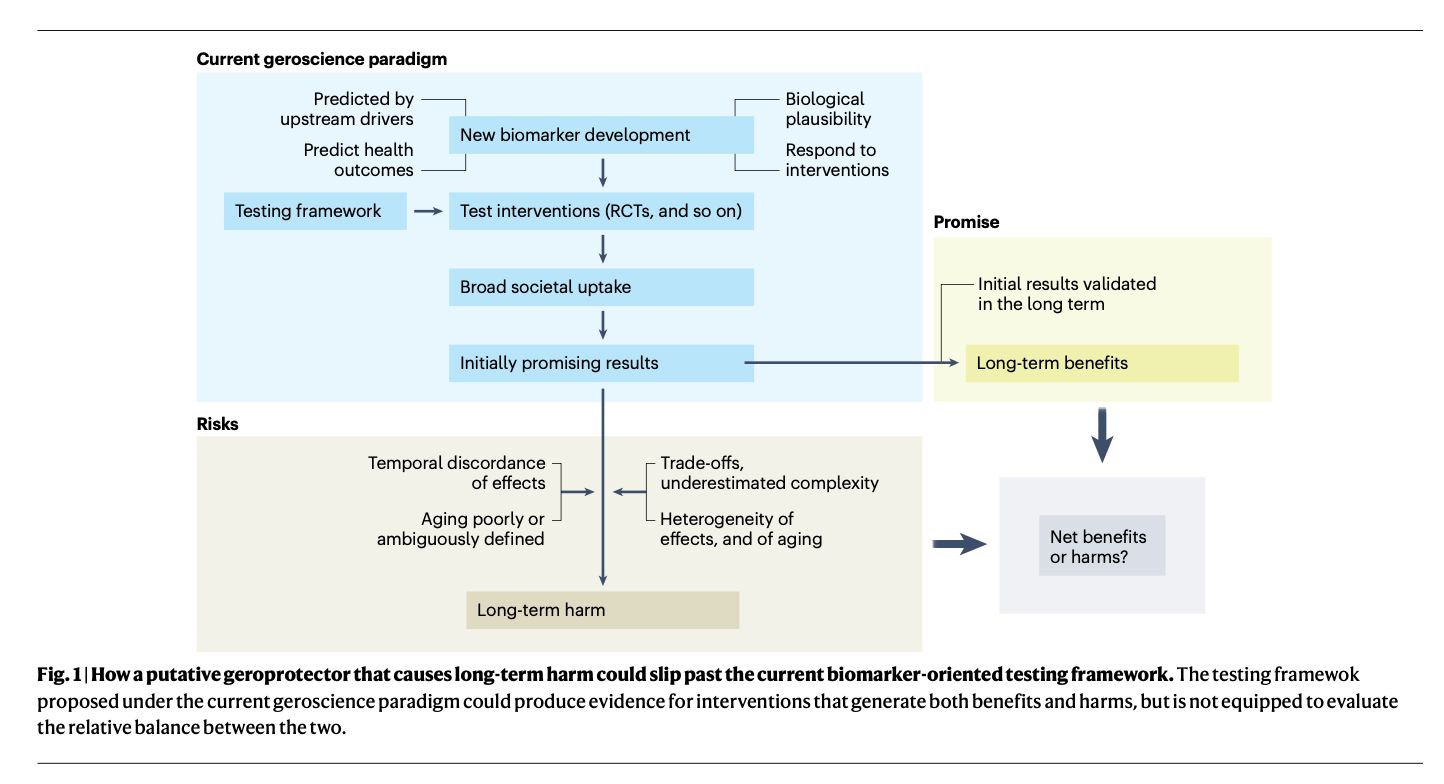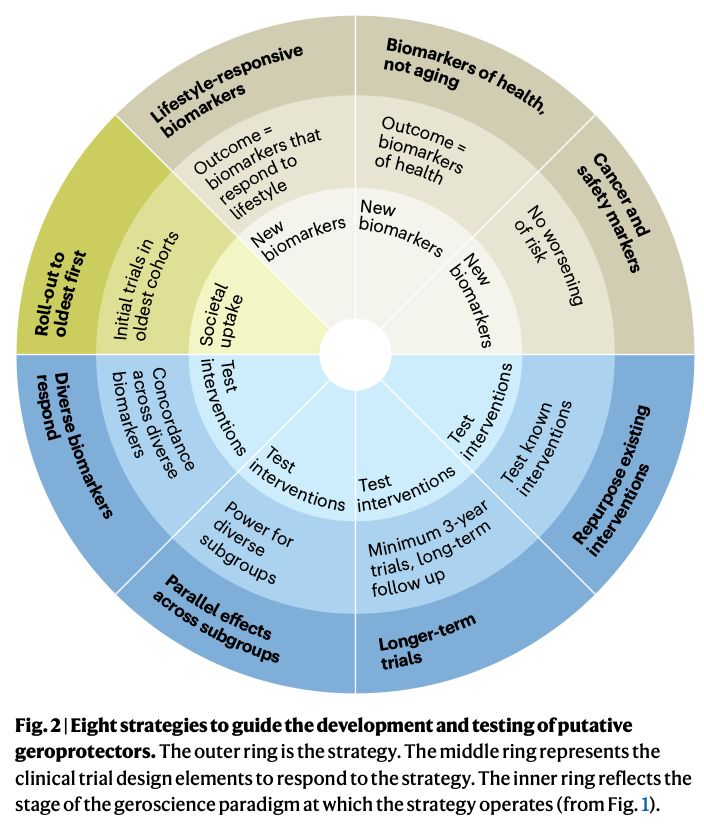From the Biomarker’s Consortium, source: x.com
The field of geroscience promises to extend healthspan by addressing the biological mechanisms of aging. However, the complexity of aging poses significant risks, as interventions may unintentionally cause harm over varying timescales. In the recently published Nature Comment, “Balancing the Promise and Risks of Geroscience Interventions,” first author Alan Cohen, who gave a compelling presentation at our 2023 Symposium, alongside Executive Co-Director Mahdi Moqri, Vadim Gladyshev of our Scientific Advisory Board, and Prof. Luigi Ferrucci of the National Institute on Aging and our Scientific Steering Committee, explores strategies to mitigate these risks.
Unlike diseases affecting single systems, aging arises from trade-offs across complex systems. This multifactorial nature complicates predicting whether interventions offer net benefits or long-term harms, even with rigorous short-term testing frameworks. Surrogate biomarkers play a key role in evaluating geroprotective therapies. However, due to aging’s heterogeneity, these markers might fail to capture critical trade-offs, risking unforeseen consequences as seen with other therapies like antioxidant supplements.
The authors propose eight strategies, including prioritizing lifestyle interventions, developing safety biomarkers, and focusing on older cohorts first. These approaches aim to balance benefits and risks across diverse populations and timescales. To ensure safety, interventions must demonstrate benefits across validated biomarkers and undergo extended trials. Public access should be limited initially to older adults, with gradual rollout as evidence accrues over decades. Careful assessment and transparent communication are vital to realizing geroscience’s potential while avoiding harm.
Read the full, unlocked Nature Comment made available by the Consortium here
[BoAC] Balancing the promises and risks of geroscience interventions - JAN2025.pdf (852.7 KB)



